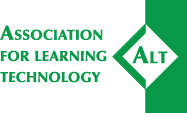Wheeler, Steve (2007) The influence of communication technologies and approaches to study on transactional distance in blended learning. Association for Learning Technology Journal, 15 (2). pp. 103-117. ISSN 0968-7769 (print)/1741-1629 (online)
|
PDF
- Published Version
Available under License Creative Commons Attribution Non-commercial No Derivatives. Download (118kB) | Preview |
Abstract
This paper explores the role played by communication technologies and study orientations in the amplification and reduction of transactional distance in blended learning. Factor analysis and structural equation modelling of different communication modes (face to face, email and telephone) revealed that students experience at least some transactional distance when separated from their tutors. Email was found to facilitate the highest levels of immediacy of dialogue for most students. The conclusion is that strategic students are best placed to benefit from blended learning, and that the effects of transactional distance could be analysed more deeply if two subvariables of dialogue were recognised. These are social presence (the perception of connectedness between students and their tutors) and immediacy (the temporal effects of dialogue).
| Item Type: | Article |
|---|---|
| Subjects: | L Education > LB Theory and practice of education L Education > LC Special aspects of education > LC1022 - 1022.25 Computer-assisted Education |
| Divisions: | ALT-J Journal |
| Depositing User: | Justin Smith |
| Date Deposited: | 18 Dec 2009 15:01 |
| Last Modified: | 04 Apr 2011 09:01 |
| URI: | http://repository.alt.ac.uk/id/eprint/716 |
Actions (login required)
 |
View Item |
